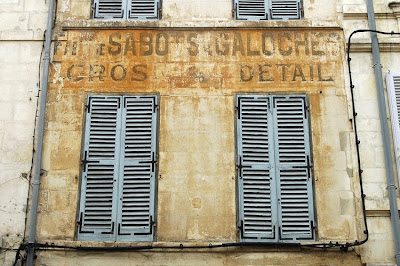A few metres from the
Mercerie along the
Rue des merciers is a shop many people in France would have been familiar with: Félix Potin. The origins of this chain of food stores go back to 1844, when Félix Potin, then aged 24, opened his first outlet in Paris. At a time when it was relatively common for grocers to add flour to sugar or chicory to coffee, or to sell sugar loaves that never reached the right weight, Félix Potin rapidly became well-known for selling "the right weight at the right price." Indeed from the very start, this was one of the four principles of his business, the others being good quality products, lower profit margins, and fixed prices on display. In order to attract customers, some basic goods were sold at a loss but that was covered by higher margins on some sweets or luxury products like cocoa. Within a few years Potin opened a few outlets across Paris. Then in 1860, at the corner of
Boulevard de Sébastopol and
Rue Réaumur, he inaugurated his flagship store: behind its 22-metre long display windows, customers could find on two floors all the foodstuffs they could imagine and even more. One year later Félix Potin inaugurated his first factory in La Villette and became the first grocer to manufacture his own products bearing his own label. Within one year twenty-one tons of sugar were crushed, seven tons of cocoa were processed, and tons of peas were automatically shelled at La Villette. All these foodstuffs were packed and labelled "Félix Potin." In a drive to cut down on intermediaries and keep prices down Potin purchased orchards in the south of France, vineyards in Champagne, and even extended his reach beyond the Mediterranean Sea. In Tunisia he acquired what would become Potinville, an estate of 3,000 hectares near Tunis, one fifth of which was planted with vine. Expansion continued but in 1870 the Second Empire collapsed and the Prussian army surrounded Paris. Without supplies the population of the French capital faced starvation. Dogs, rats, anything that could be eaten ended in cooking pots. That's when Potin bought for 27,000 francs Castor, one of the two elephants of the
Jardin d'acclimatation and sold the meat in his stores. Félix Potin died one year later, leaving a fortune of 6 million francs, two large stores and several small outlets.
Far from resting on their laurels, the heirs of Potin continued to develop the family business: new factories were opened, the flagship stores of the
Boulveard Sébastopol and
Boulevard Malsherbes were rebuilt, home deliveries were introduced, and new stores bearing the name Félix Potin opened throughout France. These were franchises granted to well-noted office workers who married a cashier, and often came with a small flat above the shop. In 1904 a new, luxurious store, ten-floor high, opened
Rue de Rennes in Paris. By the late 1920s, the company Félix Potin owned 70 subsidiaries, ten factories, and controlled hundreds of shops.
However by the 1920s the arrival of new competitors selling foodstuffs at even lower prices reduced the company's profits. Additionally in 1930 the family was forced to sell a villa in Bagatelle for 28 millions after the shady actions of one of the directors had left a huge hole in the accounts. Following the death of Jean Potin just after the Second World War, his wife inherited the company but she lacked the business sense of her predecessors. Running it according to her mood, Félix Potin declined rapidly. In 1958 the company and its 1,200 shops were bought for 5 millions by André Mentzelopoulos, who split the company in two: trade and real estate. Even though over the following decaces Félix Potin acquired several small competitors, it faced growing competition from supermarkets. In 1996 the company was liquidated.
I haven't found any specific information about the Félix Potin store in La Rochelle. Before Félix Potin moved in, the building housed another grocery store, owned by E. Garnier.

F
é
l
i
x
P
o
t
i
n | | Félix Potin
E. Garnier | | n
i
t
o
P
x
i
l
é
F |
It is rather unusual to have a name written sideways on both sides of the windows.
Below are some details of the façade.
 Félix Potin
Félix PotinThere is a real palimpsest where 'Potin' was written, with a total of three different layers. However, apart from a few letters here and there, all I managed to decipher is:
... Argent
...ur V...illé E. Garnier
E. GarnierActually these were not the only ghost signs for Félix Potin and E. Garnier in La Rochelle. Indeed the building had two entrances, one, above, on
Rue des merciers and another one on
Rue Saint-Yon, where the name and nature of these two businesses were clearly indicated too.
 Félix Potin
Félix Potin
Produits alimentaires
Produits Félix Potin
E. GarnierBelow are some details of the ghost signs on this second façade.
 Félix Potin
Félix Potin Produits alimentaires
Produits alimentaires
Produits Félix Potin Produits alimentaires
Produits alimentaires
Produits Félix Potin
E. GarnierIt seems 'E. Garnier' was written twice.
Location: Rue des merciers, and Rue Saint-Yon, La Rochelle, Charente-Maritime / Pictures taken on: 18/08/2011













































%20Costaros%20N88.JPG)






